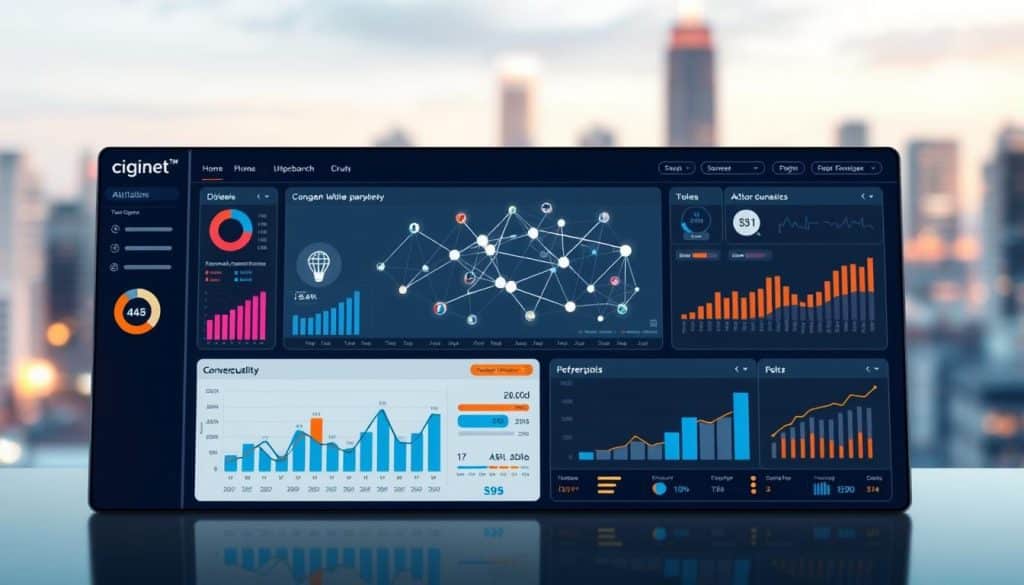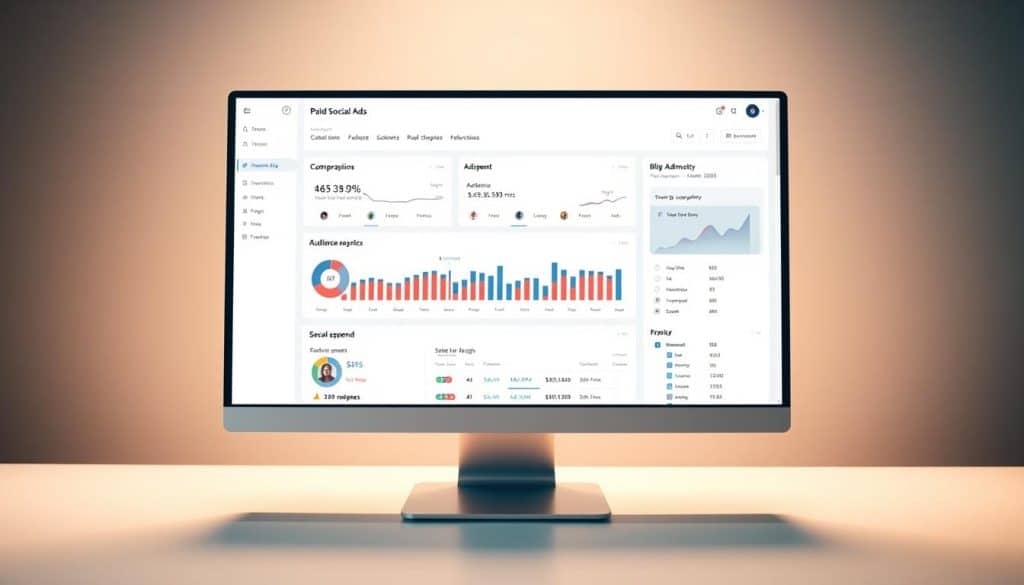Are you tracking the right metrics in your marketing plan? With many marketing metrics available, it’s easy to get overwhelmed. But, are you using the right numbers to move your business forward?
In today’s fast-paced world, knowing the right marketing metrics is key to success. It’s not just about tracking numbers. It’s about using data to make smart decisions and grow your business.
As a marketer, you need to know which metrics really count and how to use them. This article will show you the essential marketing metrics to optimize your strategy and reach your business goals.
SEO & Website Optimization
Rank Higher, Convert Faster!
Optimize your site for better search rankings and increased traffic. Let’s boost your visibility today!
Key Takeaways
- Understand the importance of marketing metrics in driving business growth.
- Learn how to identify the right metrics for your marketing strategy.
- Discover how to interpret and act on marketing data.
- Optimize your marketing strategy using key metrics.
- Achieve your business goals by making data-driven decisions.
Essential Marketing Metrics for Business Growth
To grow your business, it’s key to track the right marketing metrics. By understanding and acting on these metrics, you can make your marketing better and boost your profits.
Revenue-Driving Metrics
For businesses aiming to make more money, certain metrics are crucial. Two important ones are Return on Investment (ROI) and Customer Acquisition Cost (CAC).
Return on Investment (ROI)
ROI shows how much money you make from your marketing campaigns. A high ROI means your campaign is working well. A low ROI means it needs work. For example, if you spend $1,000 and make $1,200, your ROI is 20%.
Customer Acquisition Cost (CAC)
CAC is the cost of getting a new customer. You want to lower your CAC while getting more customers. A lower CAC means your marketing is more efficient. For instance, if you spend $500 and get 10 new customers, your CAC is $50.
Engagement and Conversion Metrics
Engagement and conversion metrics show how people interact with your brand. Key metrics include Conversion Rate Optimization (CRO) and Customer Lifetime Value (CLV).
Conversion Rate Optimization
CRO is about making your marketing better to get more sales. By improving CRO, you can increase your revenue. For example, making your landing page better can raise your conversion rate from 2% to 5%.
Customer Lifetime Value (CLV)
CLV is the total value of a customer over their lifetime. Focus on increasing CLV by giving great service and offering loyalty programs. For example, keeping customers for 5 years with loyalty rewards can boost your CLV.
Digital Performance Indicators for Canadian Businesses
Canadian businesses should also track digital performance indicators. This includes website analytics and social media engagement rates.
Website Analytics and User Behavior
Website analytics show how users behave on your site. They include page views, bounce rates, and time on site. By analyzing these, you can make your site better for users.
Social Media Engagement Rates
Social media engagement rates show how people interact with your brand online. Track these rates to see how well you’re doing on social media and adjust your strategy as needed.
Interpreting and Acting on Analytics & KPIs
In today’s world, using analytics and KPIs is key to making smart decisions. There’s a lot of data out there, but with the right approach, businesses can find valuable insights. These insights help drive growth.
Transforming Data into Strategic Decisions
To make smart decisions, businesses need to find meaningful patterns in their data. They should look beyond just the numbers to understand trends and connections.
Identifying Meaningful Patterns
Finding meaningful patterns takes both technical skills and business knowledge. Tools like SEO analytics and digital analytics help uncover insights. These insights guide marketing strategies.
Establishing Industry-Specific Benchmarks
It’s important to set benchmarks specific to your industry. This helps see how you compare to competitors. By tracking KPI tracking metrics, you can understand your performance better.
Implementing Data-Driven Marketing Strategies
With a clear understanding of your data and KPIs, you can start using data-driven marketing. This means improving marketing channels and targeting specific audiences.
Channel Optimization Based on Performance
Optimizing channels means looking at which marketing channels work best. By focusing on the most valuable channels, you can increase your return on investment.
| Channel | Performance Metric | ROI |
|---|---|---|
| Social Media | Engagement Rate | 200% |
| Email Marketing | Open Rate | 150% |
| Paid Advertising | Conversion Rate | 300% |
Audience Segmentation and Targeting
Segmenting your audience means breaking it down into smaller groups. By knowing what each group wants, you can make your marketing more effective.
Avoiding Common Measurement Mistakes
Working with analytics and KPIs can lead to mistakes. Knowing the difference between vanity and value metrics is key. This ensures you’re tracking the right data.
Distinguishing Vanity Metrics from Value Metrics
Vanity metrics might look good but don’t add much value. Value metrics, on the other hand, offer insights that help make decisions.
Understanding Statistical Significance
It’s important to know if your data insights are reliable. This means considering the size of your sample and the quality of your data.
By following these tips and avoiding common mistakes, businesses can make the most of their analytics and KPIs. This leads to growth and success in a competitive world.
Conclusion: Creating a Metrics-Driven Marketing Approach
It’s clear now that a metrics-driven marketing approach is key for growth in Canada. By tracking the right metrics, like conversion rate, marketers can see how well their campaigns work. This helps them make smart, data-backed choices.
A good metrics-driven strategy boosts ROI by finding and fixing weak spots in marketing. By focusing on important KPIs and analytics, businesses can make their marketing more effective. This leads to better results.
To get the most ROI, it’s vital to keep checking and tweaking marketing metrics. This makes sure marketing efforts match up with business goals. This way, marketers can create campaigns that really speak to their audience and boost conversions.
By going for a metrics-driven marketing approach, Canadian businesses can stay on top and reach their growth targets.
FAQ
What are the most important marketing metrics to track for business growth?
Key marketing metrics include Return on Investment (ROI), Customer Acquisition Cost (CAC), Conversion Rate, and Customer Lifetime Value (CLV). These help understand revenue, customer value, and marketing success.
How do I measure the success of my digital marketing campaigns?
Track KPIs like website analytics, social media engagement, and conversion rates to gauge campaign success. These metrics show how well campaigns work and where to improve.
What is the difference between vanity metrics and value metrics?
Vanity metrics, like social media followers or website traffic, may seem good but don’t always help the business. Value metrics, such as conversion rates, ROI, and CLV, directly impact revenue and customer value, making them more important.
How can I optimize my marketing channels based on performance data?
Analyze data to find top-performing channels and focus resources there. Use data to make decisions on channel optimization, audience targeting, and segmentation to boost ROI.
What is the importance of establishing industry-specific benchmarks?
Setting industry benchmarks lets businesses compare themselves to others. It shows where to improve and how to stand out. This guides strategic decisions and drives growth.
How do I ensure the accuracy of my marketing data and analytics?
Regularly check and validate data sources and understand statistical significance. This ensures reliable data for informed decisions.
What role does audience segmentation play in data-driven marketing?
Audience segmentation is key in data-driven marketing. It lets businesses target specific groups with tailored messages. This boosts marketing effectiveness and ROI.






